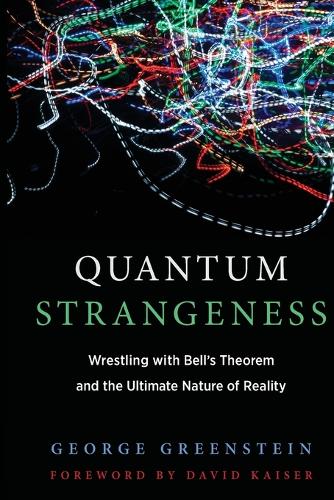
Quantum Strangeness: Wrestling with Bells Theorem and the Ultimate Nature of Reality
(Paperback)
Publishing Details
Quantum Strangeness: Wrestling with Bells Theorem and the Ultimate Nature of Reality
By (Author) George S. Greenstein
Foreword by David Kaiser
MIT Press Ltd
MIT Press
19th September 2023
United States
Classifications
Tertiary Education
Non Fiction
530.12
Physical Properties
Paperback
160
Width 152mm, Height 229mm
454g
Description
A physicist's efforts to understand the enigma that is quantum mechanics. Quantum mechanics is one of the glories of our age. The theory lies at the heart of modern society. Quantum mechanics is one of our most valuable forecasters-a "great predictor." It has immeasurably altered our conception of the natural world. Its philosophical implications are earthshaking. But quantum mechanics steadfastly refuses to speak of many things; it deals in probabilities rather than giving explicit descriptions. It never explains. Einstein, one of its creators, considered the theory incomplete. Even now, many years after the creation of quantum mechanics, physicists continue to argue about it. Astrophysicist George Greenstein has been both fascinated and confused by quantum mechanics for his entire career. In this book, he describes, engagingly and accessibly, his efforts to understand the enigma that is quantum mechanics. The fastest route to the insight into the ultimate nature of reality revealed by quantum mechanics, Greenstein writes, is through Bell's Theorem, which concerns reality at the quantum level; and Bell's 1964 discovery drives Greenstein's quest. Greenstein recounts a scientific odyssey that begins with Einstein, continues with Bell, and culminates with today's push to develop an industry of quantum machines. Along the way, he discusses spin, entanglement, experimental metaphysics, and quantum teleportation, often with easy-to-grasp analogies. We have known for decades that the world of the quantum was strange, but, Greenstein says, not until John Bell came along did we know just how strange.
Reviews
This is one of the finest books I have read on quantum mechanics: lucid and careful, but also entertaining, honest, and generous. It gets to the core of the matter, exposing the strangeness we perceive withing quantum theory. George Greenstein doesn't pretend to give you the answers, but he does something more valuable: he reveals the right questions.--Phillip Ball, author of Beyond Weird: Why Everything You Thought You knew About Quantum Physics is Different--
George Greenstein tried for a long time to develop a clear understanding of why Bell's inequalities are important, and one day he had, as he says, an epiphany. We must thank him for sharing with the reader the long and difficult path that led him to his final clarification.
--Alain Aspect, Professor at Institut d'Optique Graduate School, Universite Paris-Saclay--Author Bio
George Greenstein is Sidney Dillon Emeritus Professor of Astronomy at Amherst College. He is the author of Frozen Star- Of Pulsars, Black Holes, and the Nature of Stars, The Symbiotic Universe- Life and Mind in the Cosmos, The Quantum Challenge- Modern Research on the Foundations of Quantum Mechanics (with Arthur Zajonc), and other books. David Kaiser is Germeshausen Professor of the History of Science and Professor of Physics at MIT. He is the author of several award-winning books on the history of science, including Quantum Legacies- Dispatches from an Uncertain World, and the editor of Becoming MIT- Moments of Decision (MIT Press). His work has been featured in Science, Nature, the New York Times, and the New Yorker.
